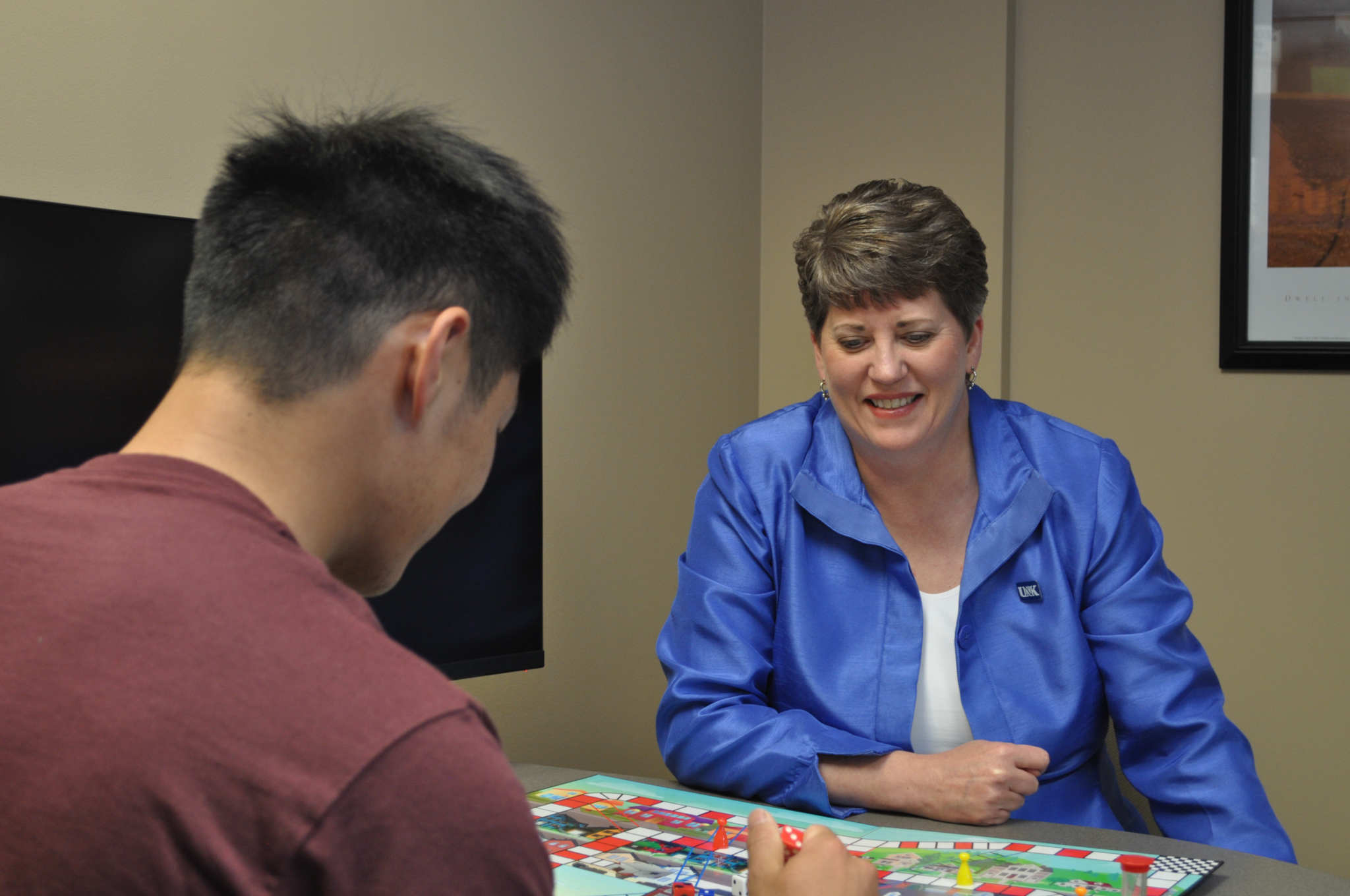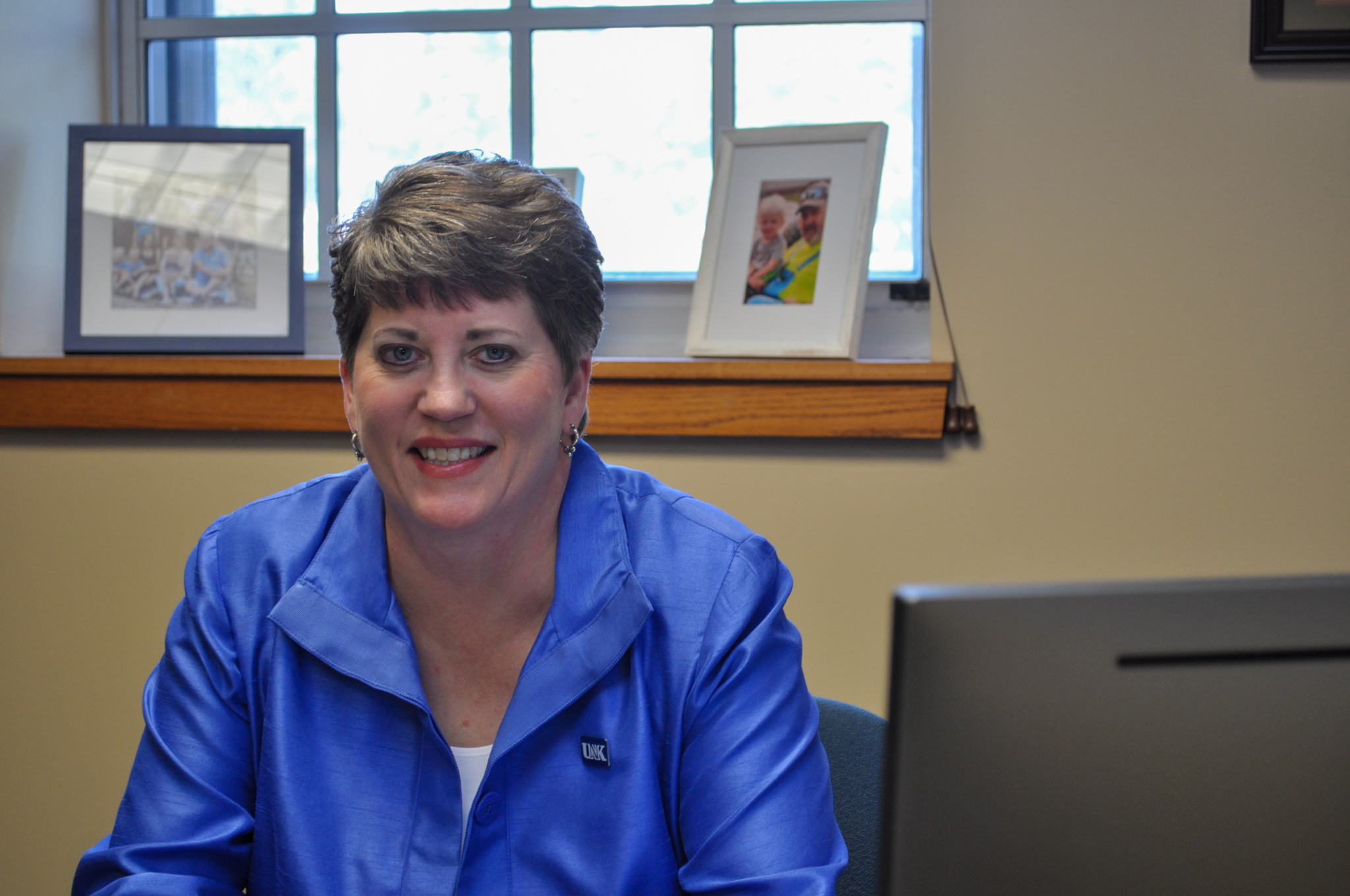From Board Games to the Boardroom
Posted: September 6, 2022 12:00:00 AM CDT
For the casual observer, students in Dr. Brooke Envick’s Creativity and Innovation class spend their time goofing around. After all, their semester involves creating and playing board games. While having fun is certainly a byproduct of their learning, there is much more going on than what meets the eye. The level of learning taking place is precisely what these students need to be prepared for the increasingly competitive marketplace they will soon find themselves a part of.
According to Dr. Envick, professor of management at the University of Nebraska at Kearney, students tend to “lose creative confidence” as they age. Understanding this, she strategically created a unit for her MGT405-Creativity and Innovation course which focuses on helping students understand how to use their own strengths in conjunction with those of their peers. In preparation for being part of a team in their future professions, students work on a collaborative project which, by the end of the semester, has helped their self-confidence soar.
Dr. Envick needs to get to know each of her students before she can successfully facilitate their learning. To do this, she first determines their strengths and weaknesses. This data, which she obtains from the fifty-question Kaufman Domains of Creativity survey, is essential for her to form groups for the semester-long project. After gathering the results, she can place each student in one of five categories: everyday/self, scholarly, performance, mechanical/science, and arts. Not only does this help her create heterogeneous groups in her classroom to mirror the workplace, but this information is also shared with her students to help them gain an understanding of who they are as learners and potential employees. She states these results help her students understand how they can “add value to the game through (their) creative strengths” as well as learn to work with peers whose strengths differ from their own.
Once the groups have been developed, there is a rigorous step-by-step process used to take the students through this unit. These steps require them to follow the path from conceptual creativity to functional creativity as they come up with an original idea to eventually implement in the form of a design for their board game. Finally, the prototype comes to fruition thanks to visual creativity.
This project becomes more than just a means to gain a passing grade. As students work together as individuals within a group, they learn to be transparent. According to Dr. Envick, students learn that “in the workplace everyone sees what you contribute” which leads to them gaining much more than a grade in her class. They are rewarded by feedback from their peers as well as increased confidence in their creative abilities by the end of the course.
While the only challenge Dr. Envick has faced since creating this unit has been explaining its intense rigor to others, she has learned a lot from her students. The first year she taught this class she decided waiting for an exit survey would not be sufficient to obtain student feedback. Throughout the project, she listened to her students and used their feedback to make adjustments. By the third year, she felt this project was “smooth as silk” which she contributes to the fact that each of her students had a clear understanding of how critical their contribution was to their group. The balanced teams she creates through the use of carefully gathered data, the transparent relationship she develops with her students, and the desire the students have to use their strengths to help create a custom-made board game have made this course a perfect stepping-stone for students on the verge of entering the marketplace.
Dr. Envick explains that “creativity is a top-ten skill that employers are looking for” which is why she not only has her students work as part of a team for thirteen weeks, but she also has them write a reflective paper. She has them reflect on their contribution, articulate what they have learned, and explain how they will apply this experience to their specific future career. In a sense, she has taken them through the process of answering interview questions before they step foot into a potential place of employment.  She is confident that she is helping them become “more than (what) the employer’s expecting” due to how she uses the creation of a board game to help her students master problem solving via creativity.
She is confident that she is helping them become “more than (what) the employer’s expecting” due to how she uses the creation of a board game to help her students master problem solving via creativity.
As with every good thing, Dr. Envick would love to see her ideas for this project become better. She is handing off the course to Dr. Robert Macy, who is the new director for the Center of Entrepreneurship at UNK, and states that she “can’t wait to see what he does with it.” With Dr. Macy’s background in entertainment entrepreneurship, she is confident he will take her idea to the next level.
When she started this project three years ago as part of her creativity and innovation course, she began collecting data. Using a control group in a similar class, she was able to prove the value of the creativity piece when it comes to preparing students for the marketplace. This course has shown her “how talented each individual student is” which has caused her to “focus on students in the same way in different classes.” This shift in thinking is something she would like to share with other professors, especially those who teach business courses.
She has personally become more creative as a professor since implementing her board game project. This has allowed her to help her students understand how their own creativity will help them in their future professions. She is confident her students leave her class with more than just increased academic knowledge. They leave with an awareness of their personal growth.
Dr. Envick has written a paper for the Global Journal for Business Pedagogy about this innovative board game project. She also presented these findings to other business faculty members at the 2022 summer conference of the Institute for Global Business Research. Indeed, she shared much more than just her research as she handed over the instruments she has used to make this project a success for her students, giving her peers the step-by-step means to use her idea in their own classrooms.
With an understanding that now, more than ever, creativity is vital to marketplace survival, Dr. Envick’s board game project helps her students understand that they have creative gifts to offer. She wants her students to move beyond surviving and learn to thrive in their future careers. Understanding that a person’s profession should be enjoyable, Dr. Envick took her students back to their childhood, back to a time when they learned best by using their imaginations. In her class, which is difficult and requires an intense level of thinking, she manages to reignite their creativity. She does this by letting them play games with their friends.









